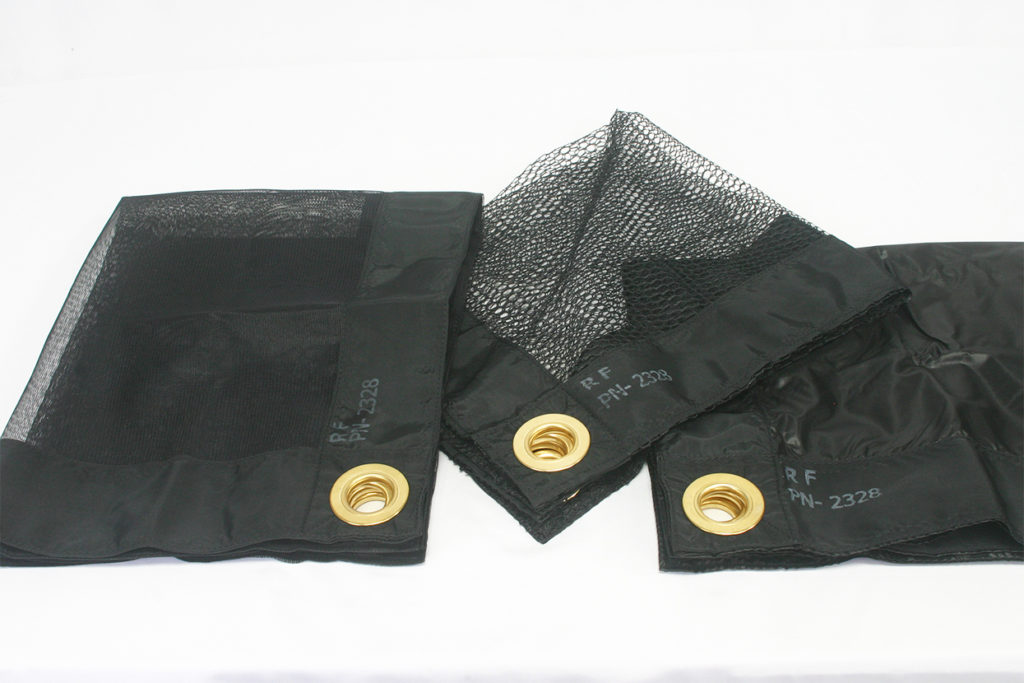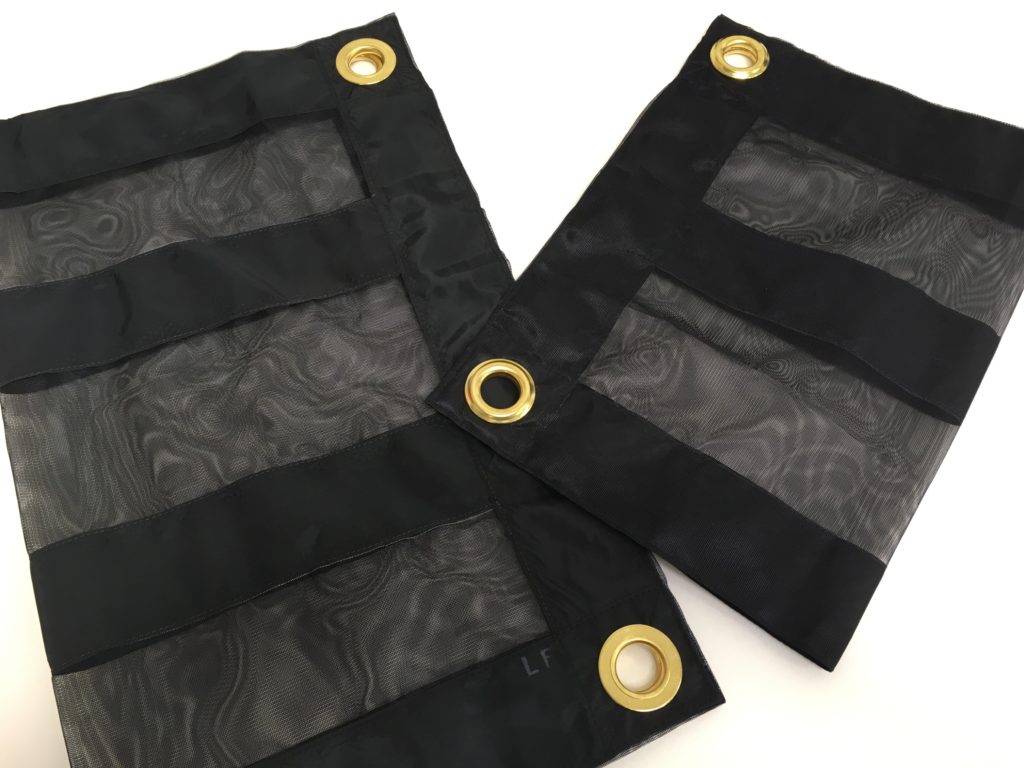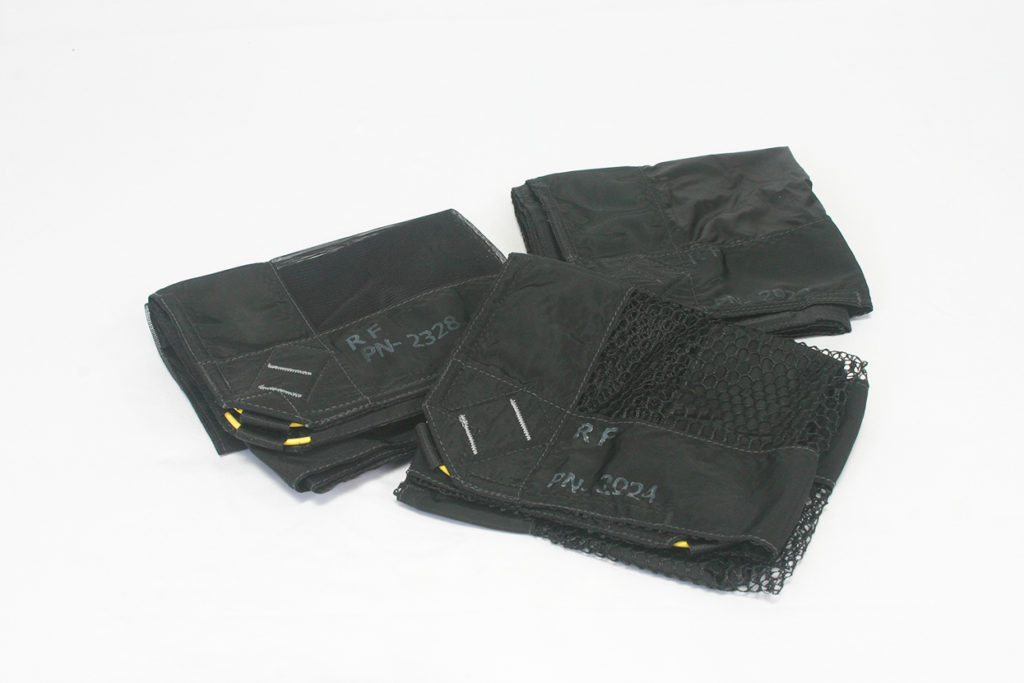Generally speaking, when BASE jumping slider-up you have three options:
- Large Mesh Slider
- Small Mesh Slider
- Slow Slider
While Apex BASE and others also offer sail sliders (and even collapsible sail sliders) these are intended for use only in the skydiving environment for BASE canopy practice. Apex BASE, and common sense, suggest that using a sail slider on a BASE jump would be a really bad idea. For that reason we will only focus on sliders intended for use in the BASE environment here.

From left to right: Small Mesh Slider, Large Mesh Slider, Sail Slider.
Large Mesh Slider
While many jumpers use the Large Mesh Slider on all styles of slider-up jumping, its optimal use is during sub-terminal slider-up jumps. These jumps will have delays under 10 seconds and are most commonly slick, though sometimes the jumper may be wearing a tracking suit.
Small Mesh Slider
The Small Mesh Slider is advised for all styles of terminal BASE jumping: slick, tracking suit, and wingsuit. Using a Small Mesh Slider, in combination with packing technique, will help slow down your terminal BASE openings.
Slow Slider
For jumpers who would like to further slow their opening speeds we offer a Slow Slider, which is a Small Mesh Slider with some additional tape sewn across the mesh reducing the amount of air that can pass through the slider. For most jumpers we recommend trying a Small Mesh Slider and modifying packing techniques before moving to a Slow Slider.

Slow Sliders with additional tape across the small mesh panel.
Removable Sliders
Apex BASE offers removable BASE sliders in addition to the traditional sliders pictured above. The removable sliders function exactly as the traditional sliders described above, with the additional benefit of being able to be installed/removed from your canopy without fully disconnecting the canopy from the container. When switching from slider-up to slider-off and vice versa traditional sliders are more work and carry a greater risk of rigging errors. The removable system makes this transition easier and less prone to rigging errors.

Removable Sliders in Small Mesh, Large Mesh, and Sail.
AIRSPEED!
The number one factor influencing how hard, or soft, your openings are is airspeed at deployment. Understand how your body position, angle of attack, and pitch technique can impact your airspeed and opening speeds.
Packing
If you’re unhappy with the speed of your openings there are many variables you should consider in addition to slider selection. Pitch technique, pilot chute selection, jumping style (slick, tracking suit, wingsuit), canopy size and fabric type (standard or UltraLite), and packing technique (rolled nose, direct slider control, etc.) will all play a role in your opening speeds. Do not expect a slider change to drastically change your opening speeds. All factors should be considered, and more than one will likely need to be modified to get the opening speed you desire.
DON’T FORGET!
Slower openings usually mean an opening that occurs over a greater amount of altitude. When you’re configured for a slower opening, make sure you pull with sufficient altitude to facilitate that opening and a safe landing at your intended LZ.
